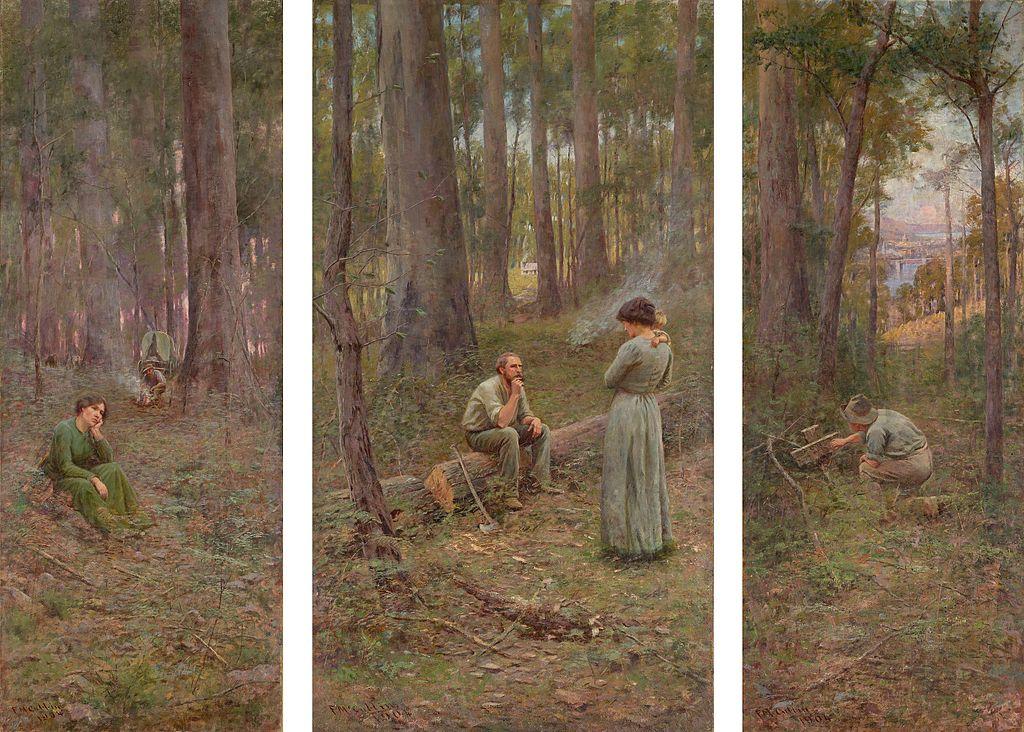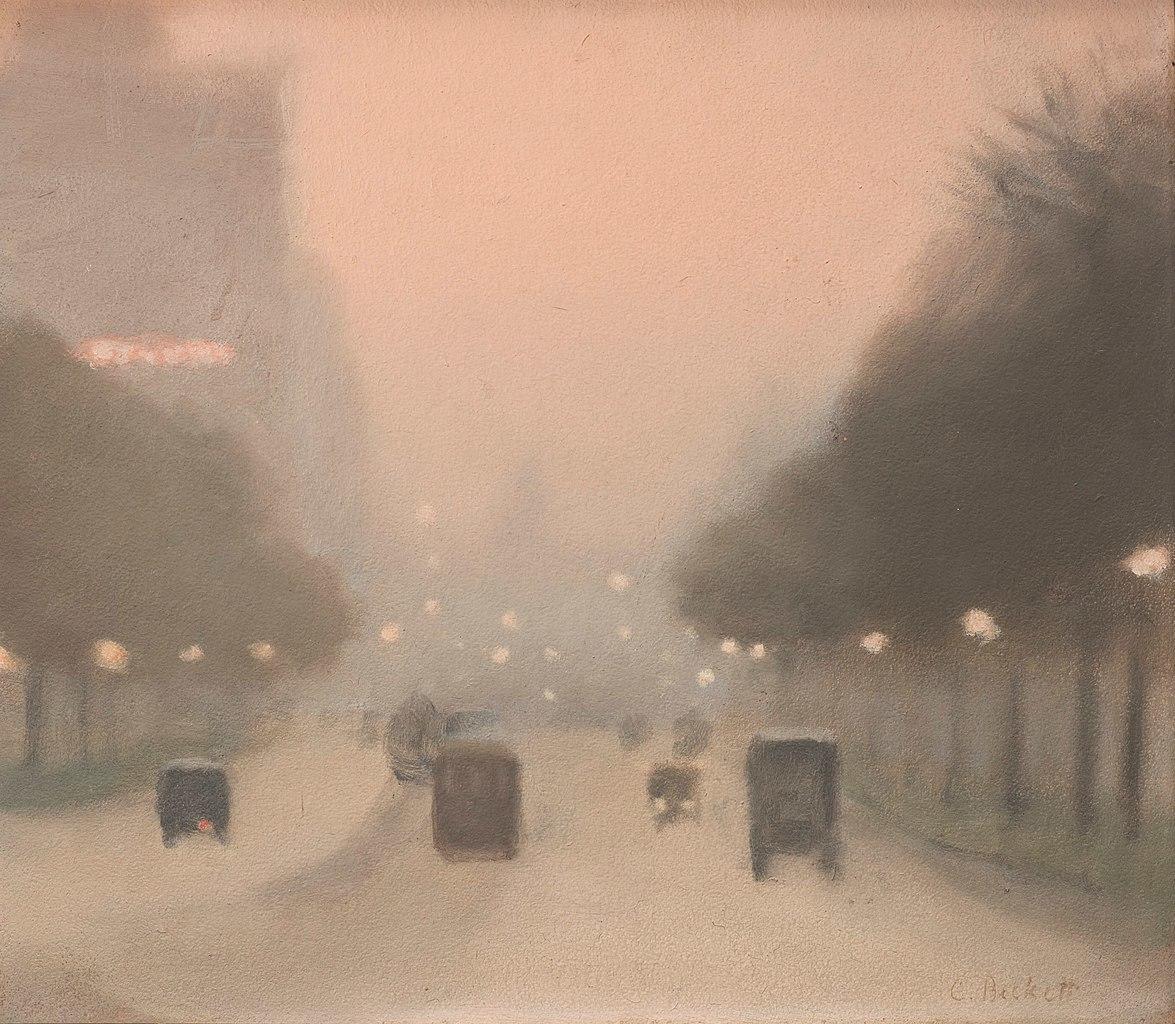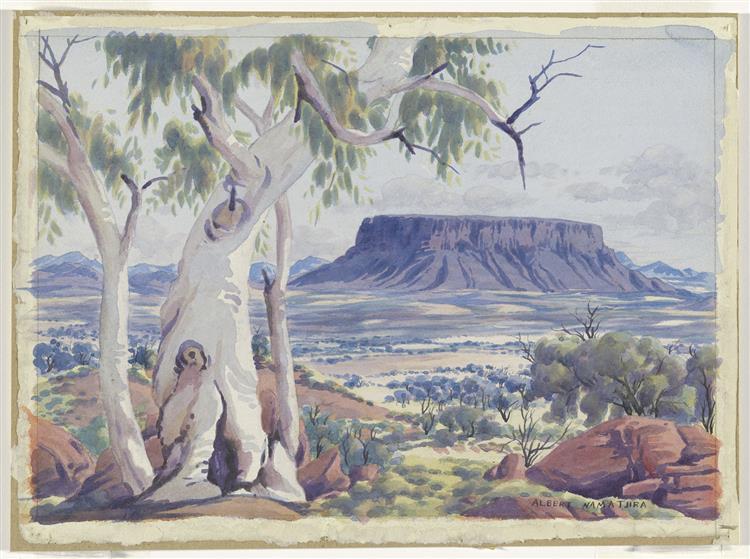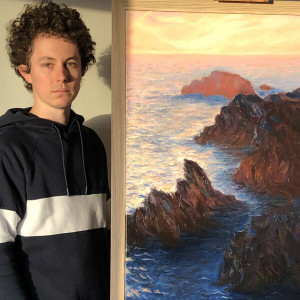Australia is a unique country in the modern world in terms of Western, European, and white culture. It was the last continent to be explored by Europeans (aside from Antarctica) and is a very new country by these standards. Because of this, Australia wasn’t part of many artistic movements that its parent country, Britain, had experienced, like the Baroque period, for example.
But, that does not mean that Australian art has been left in the dust since its colonisation in 1788 or its federation in 1901! In fact, there had been prolific artworks and art movements present in the country even before Europeans arrived. But in this article, we will cover the Modernist and Contemporary art movements that can be found in Australian history.
Modern Art is the name for art created from around the 1860s to the late 1960s. This name was given to the movement in retrospect, as are many art movements. Modern Art consists of many sub-movements, like Cubism and Expressionism. Art made after the 1960s to today is considered Contemporary Art (con = same, temporary = time), which simply refers to art happening in the present age. It is also sometimes referred to as Post-Modern.

Australian Modern Art
Modern art took hold in Australia beginning in Melbourne in the years before the Second World War. While the movement had been taking place since the 1860s in Europe and the United States, it was not in full swing in Australia until about 1914.
Before Modernism hit the shores, Australian art was decisively about landscape paintings, generally with a flair for romanticism. Soft colours and light treatments made the Australian landscape seem surreally beautiful and inviting, like a dream. Depictions of Indigenous peoples were often unrealistic and inaccurate.
After the settlers’ and newly-arrived artists’ infatuation with the exotic sights wore off, it was time for Australians to create a new identity in the art world, showing things in the country in a more realistic way.
Many artists arrived in Australia with an educational background in Europe. They were knowledgeable of some new artistic ideas being developed, such as Impressionism, Fauvism, Cubism, and Surrealism. These new ideas were ways that traditional Australian art could be turned on its head, making space for a new movement.

Australian Impressionism
The first movement to diverge from the traditional colonist-style paintings in Australia was the Australian Impressionist movement, also known as the Heidelberg School. These artists, some of whom had learned painting techniques in Europe, aimed to capture a scene rather than a moment in time, as the previous landscape painters had mostly been doing.
In 1891, a few young men came together to create the Heidelberg School, which essentially brought the principles of Impressionism to Australia. The artists utilised European Impressionist techniques to capture landscapes and scenes, especially of everyday life, often of pioneers.
This was the very first real post-colonial art movement that felt natively Australian and set the country up for more art exploration in the future.
The five main artists who created the Heidelberg School movement were Frederick McCubbin, Tom Roberts, Arthur Streeton, Walter Withers, and Charles Conder.
Australian Tonalism
In the 1910s, a new movement entered the stage: Tonalism, aka Meldrumism. Max Meldrum, the leader of the movement, proposed a way of composing and creating paintings by way of putting down the colours as they relate to one another and in the order by which they were noticed by the eye in situ.
The process resulted in paintings that appear almost nostalgic, as if viewed through a rainy or foggy window and are most often depicting mundane scenes, like a vehicle driving away. If painted in a realist style, the picture would likely be highly uninteresting, but with the Tonalist treatment, it becomes an enrapturing piece of artwork.
Received with mixed reviews at the time, Tonalist paintings are now a staple in Australian art history; it was the second real uniquely Australian art movement after the Heidelberg School.

Australian Abstract Art
One of the first things to change in Australian art was the use of colour. Many artists started experimenting with vivid, often unrealistic and saturated, colours, which was a complete change from the soft, romantic tones being used previously. This naturally led to experimentation with abstraction.
As part of the Modern art movement in Australia, some artists had the idea to combine art with music to create a synaesthesia-like experience. Sydney artists Roy de Maistre and Roland Wakelin explored the abstract by creating an exhibition in 1919 titled Colour in art which featured highly saturated, unnaturally-coloured paintings of the area near Sydney Harbour intended to encourage the viewer to “hear” the colour harmony in the picture.
Synaesthesia is a condition where different senses overlap. People with this condition often experience colour in response to sounds, including letters, numbers, and words. People also often experience sound in response to visual stimuli like colour.
The response to the exhibition was understandably mixed, as the abstract shapes and colours were strikingly different from what people were used to seeing at the time. Plus, synaesthesia is not easily understood by those who do not experience it, so it was confusing for many viewers to understand.
Nevertheless, it was a ground-breaking experiment and helped encourage more boundary-pushing in art in the school of Abstraction and elsewhere.
Beyond synaesthetic work, many other Australian artists crafted intriguing and boundary-pushing abstract paintings.

Indigenous Modernism
Some of the best instances of art that feels uniquely Australian are the works by Albert Namatjira, an Indigenous man who became the prime example of modern Australian outback art. His use of colour in his watercolour paintings, which he began creating around 1934, differed greatly from that of the colonial painters and his contemporary white artists. Where other artists tried to colour-correct and show the landscape with earthy hues, Namatjira captured the duskiness in the air, which changed the distant land features into blue-scaled terrain. His use of colour is considered part of the Hermannsburg School, which is an art movement characterised by the use of Western-style compositions to create landscapes but with altered use of colour. It originated in the Hermannsburg Mission in Central Australia.

Contemporary Australian Art
In the 1960s-70s, the world experienced a period of rapid social, cultural, and political change, and Australia was no different. What was unique was the history and culture of the country.
Artists began experimenting with materials, concepts, and techniques, mirroring society’s experimentation with thinking and acting in new ways. As civil rights increased, so too did recognition of Indigenous art as a significant and integral part of the nation’s cultural identity.
International art movements like Pop Art, Conceptualism, Minimalism, and Postmodernism found their way into Australia through exhibitions, publications, and cultural exchanges. Along with much of the developed world, Australia began using art as a platform for sociopolitical commentary and change.
Indigenous Contemporary Art
Indigenous art has been a cornerstone of Australian culture for tens of thousands of years, but its recognition as part of the contemporary art world has grown significantly in recent decades. Artists like Emily Kame Kngwarreye, Rover Thomas, and Clifford Possum Tjapaltjarri redefined the perception of Indigenous art, blending traditional symbols and stories with innovative techniques and mediums. Contemporary Indigenous art often addresses themes of land, identity, and the enduring impact of colonization, offering a powerful and ongoing dialogue between the past and present.

Pop Art and Postmodernism
Pop Art and Postmodernism emerged as influential movements in Australian art during the 1970s and 1980s.
Artists like Howard Arkley and Jenny Watson embraced the aesthetics of everyday life, exploring themes of consumer culture, suburban identity, and mass media.
Arkley’s vivid, airbrushed depictions of Australian suburbia, for instance, transformed mundane scenes into vibrant, almost surreal landscapes, while Watson’s work often combined text and images to explore personal and cultural narratives.

Environmental and Eco-Art
Australia’s unique landscapes and ecological challenges have inspired a growing movement of environmental and eco-art. Artists like Janet Laurence and John Wolseley create contemporary paintings that highlight the fragility and beauty of the natural world. Laurence’s installations often blend scientific and artistic elements, addressing themes like climate change, biodiversity, and conservation.
Commentary in Australian Art
Modernism in Australia was very socially-charged, as is much of the Contemporary art coming from Australia today. By virtue of being a colony located in lands that were once inhabited only by Indigenous peoples, it was inevitable that Australian art would take on a dual role of being both art for art’s sake and a way to convey social and political ideas.
And it’s not just colonialism and Indigenous rights that make their appearance in art commentary; many other social issues like wealth disparity, war, industrialisation, women’s rights, and identity have been and are prevalent topics in many Australian artists’ works.
There are many art movements under the umbrella terms “Modernism” and “Contemporary,” and in each movement are many artists of all different backgrounds, each with stories to tell.
Some painting styles are better suited for certain messages. For example, the art styles of Expressionism, Surrealism, and Social Realism are particularly useful for conveying sociopolitical ideas.
Uniquely Australian: Indigenous Voices
One of the most prevalent topics in Australia, in art and in many other facets of society, is Indigenous Rights. Throughout Australia’s art history, there have been voices, both Indigenous and white, that have commented on the ever-present and complicated issue of colonialism in Australia.
Oppression, colonialism and anticolonialism, and lifting Indigenous voices have been a central theme for lots of art made in Australia. Aboriginal artists have created traditionally-inspired masterpieces as well as works made with European processes. White artists have created works pointing out the mistreatment of First Nations peoples.
The aim of these works is to bring to light the struggles of First Nations peoples today and celebrate their heritage and tradition. Some are meant to persuade public opinion.
All have had an impact at different points in time, such as when the public rallied around Albert Namatjira.
Modern and Post-Modern Australian Artists to Know About
Throughout the years, there have been numerous Australian artists of renown. From Australian modern artists to contemporary artists Australia, and everything in between, there are some names you should be familiar with if you’re interested in the history of Australian art.
Here is a (non-exhaustive) list of some of the best and most notable Australian artists from c. 1860 to the present day.
| Artist | Birth & Death | Known For |
|---|---|---|
| Tom Roberts | 1856-1931 | Heidelberg School, Impressionism |
| Arthur Streeton | 1867-1943 | Heidelberg School, Impressionism |
| Margaret Preston | 1875-1963 | Early Modernism |
| Grace Cossington-Smith | 1892-1984 | Post-Impressionism |
| Albert Namatjira | 1902-1959 | Hermannsburg |
| Emily Kame Kngwarreye | 1910-1996 | Contemporary Indigenous Australian art |
| Russell Drysdale | 1912-1981 | Expressionism |
| Sidney Nolan | 1917-1992 | Modernism, Expressionism, Impressionism, Surrealism |
| John Brack | 1920-1999 | Modernism, Post-Modernism, Antipodeans, Surrealism, etc |
| Arthur Boyd | 1920-1999 | Impressionism, Surrealism, Social Realism |
| Jeffrey Smart | 1921-2013 | Modernism, Post-Modernism |
| Margaret Olley | 1923-2011 | Still Life, Portraiture |
| Fred Williams | 1927-1982 | Expressionism |
| John Henry Olsen | 1928-2023 | Abstraction, Landscape |
| Brett Whiteley | 1939-1992 | Abstraction, Avant-Garde |
Art has always been a method for people to put forth their thoughts, feelings, and ideas in interesting ways. Australia, although a young country compared to others having to do with Britain, already has a rich history of painted art - not to mention all the other mediums!
The future of art will surely be interesting; seeing what comes next from Australia (and the rest of the world) will be quite an experience!















